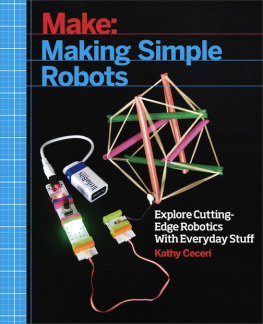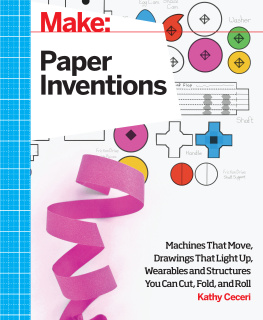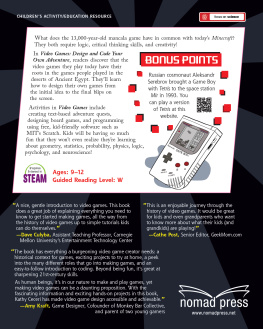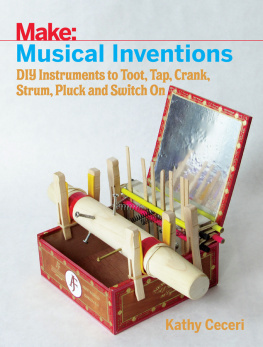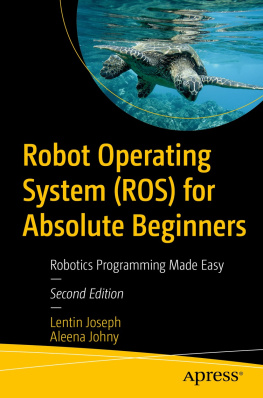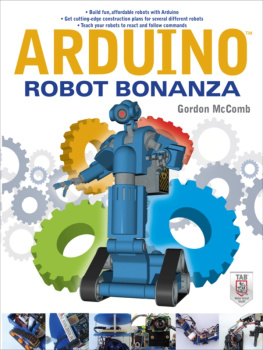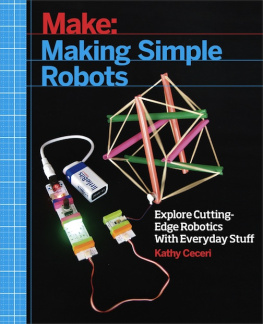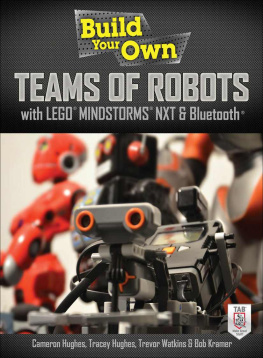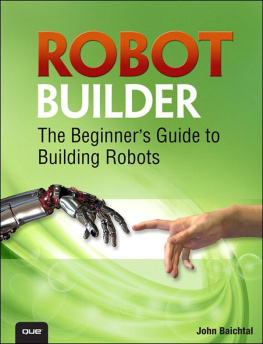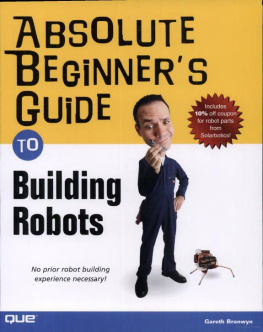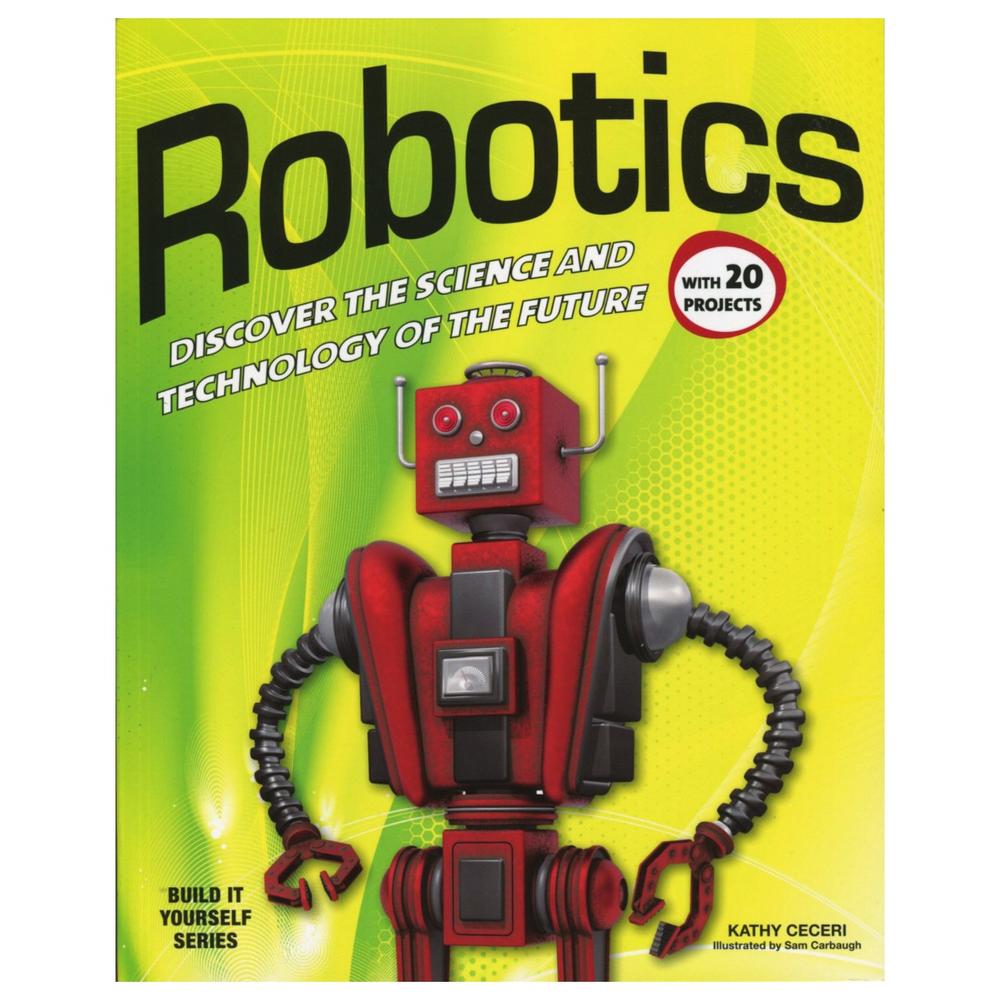Making Simple Robots
Kathy Ceceri
Preface
I have always loved robots. When I was young, I devoured Isaac Asimovs stories, rooted for R2-D2 and C-3PO, and admired the cool stylishness of the replicants in Blade Runner . But I didnt try to build my own robots until I became an educator and a mom.
My son (the computer whiz) got his first Lego Mindstorms Robotics set when he was 12, and immediately set to work assembling his own creations. He attended robotics camp and learned to solder, work with metal, and program microcontrollers.
I watched his progress as a robot builder with envy but as a writer and artist more comfortable working with cardboard and duct tape than software and hardware, I never thought about joining in.
Then two things happened. My familys homeschool science blog led to an invitation to join the writing community at the).
I already knew a little about real robots from watching my son and interviewing robotics experts. And I now knew a bunch of knowledgeable folks I could call on for suggestions and advice. So I took the assignment, setting out to describe where robots came from and how they worked from the inside out. Because the book was aimed at 9- to 12-year-oldsand especially because I came to the topic with virtually no knowledge of electronics and mechanicsI wrote the book assuming my audience knew nothing as well. Starting from square one, I took readers on a tour of the various systems that go into robot design.
The projects I developed for that book presented a challenge in their own right. With a target audience of schools and libraries, Nomad set tight limits on how elaborate (and expensive) the do-it-yourself activities could be. As much as possible, the projects in Robotics: Discover the Science and Technology of the Future had to involve only ordinary crafts supplies and recycled materials. No kits, no solderingnot even a computer!
Figure P-1. My first book of robotics projects was published by Nomad Press in 2012.
Turns out, by finding ways to overcome those limitations, I became an expert in low-tech/no-tech robotics. And the response has been encouraging. In my workshops at schools, museums, and libraries, I see kids who have never taken a gadget apart before or wired up a motor to a battery become absorbed in designing their own moving robots. When I display my projects at Maker Faires and Mini Maker Faires, numerous parents and teachers tell me my projects and explanations speak to them at their level as well.
Its obvious to me that there are a whole lot of adults who would like to be able to do more with technology, robotics, and the Maker Movement without having to go back to school. Its easy to understand why: we are constantly surrounded by new technology that to most of us might as well be magic. Yet the news is filled with stories on why the publicespecially kidsneed to understand more about STEM (Science, Technology, Engineering, and Math) if were to function in the world of the future. We want to know this stuff for our own satisfaction, and so we can help the children in our lives understand it too.
Yes, there are some great kits and beginner robot-building books out there. But I know there are still many adults who have more curiosity than experience with working with electronics. For many of us, even basic isnt basic enough.
Thats why I wrote Making Simple Robots for Maker Media. I want to take those low-tech/no-tech projects that have proved so popular with people like me and push them just a little bit further. In this book Ill hold your hand as you tackle projects you might have shied away from before because of fear of the time, money, tools, skill level, or safety issues involved.
And Im here to tell you, you dont have to go it alone. There are more opportunities than ever before for us nontechy types to mingle with engineers and veteran tinkerers, in the flesh and online. Here in upstate), where a host of knowledgeable people volunteer their time helping people like me get up to speed with the amazing new tools and materials around us. And dont forget the many educators, businesspeople, and hobbyists who generously share their expertise and suggestions on sites like makezine.com and instructables.com .
Figure P-2. The first home of the Tech Valley Center of Gravity in Troy, NY.
If youve been frustrated, as I have, by experts whove forgotten what its like to be a newbie and who fling jargon around that makes it seem like youll never fit in, take heart. In Making Simple Robots, Ive made sure that all the projects, regardless of their complexity, start at a level that feels familiar to anyone whos got basic arts and crafts experience. My hope is that Making Simple Robots encourages you to reach out and explore some of the newer technology taking over the hobby robot world.
Inspiration from the Father-Daughters Team at Beatty Robotics
If youre wondering how far a beginner can go with no formal electronics training, take a look at the Beatty family. It didnt take long for dad Robert (a mechanical engineer and retired cloud computing pioneer) to help daughters Camille and Genevieve, then 11 and 9, go from building kits to machining parts for their own robot designs. Beatty Robotics has created working models of space rovers for museums in New York and Prague. Here Camille, now 13, describes the path from novice robot builder to expert.
Where did you learn the skills to get started?
When I first came up with the idea of building robots, we didnt know anything. So, we started Googling around and learning what we could, then we bought some parts, and started trying to put things together. We watched YouTube videos to learn how to solder and we read lots of articles and blogs. We learned how to program Arduino microcontrollers, how to wire the electronics, how to machine metal, and all the other skills we needed. My dad learned along with us, but he gets us to do as much of the hands-on work as possible. After building our first six or so robots, we started to feel like we were getting the hang of it, but we always challenge ourselves with new designs.
How do you deal with frustration when things dont work?
Building robots is usually very fun, but, yes, sometimes it gets frustrating. Sometimes things dont work the way they should or you cant figure how to get something to work at all. Sometimes you get 90% done with something and then you break it or ruin it and you have to start all over again. That can be very frustrating. We have a whole box full of burned up electronics, broken tool bits, and other failures that we jokingly call the Box of Shame. But we know that its all part of the learning and experimenting process. A lot of times when we blow something up its kind of fun. Well, thats another one for the Box of Shame! And then we try again. Other times, you think something up and you build it but it doesnt come out as good as you had envisioned. So, yes, there are many challenges, but you just keep pushing and learning and building more, and then when it comes out right, it feels really awesome. By the time were done with a robot, we really love it, and dont want to let it go.

